Of all the natural remedies you’ve heard of but aren’t quite sure where or how you’ve heard of them, mustard baths probably top the list. This Ayurvedic remedy is known for warming things up to relax sore muscles and relieve congestion. But you don’t need to spend the money on Dr. Singha’s formula to reap the benefits—you can make your own mustard bath at home with a few simple ingredients.
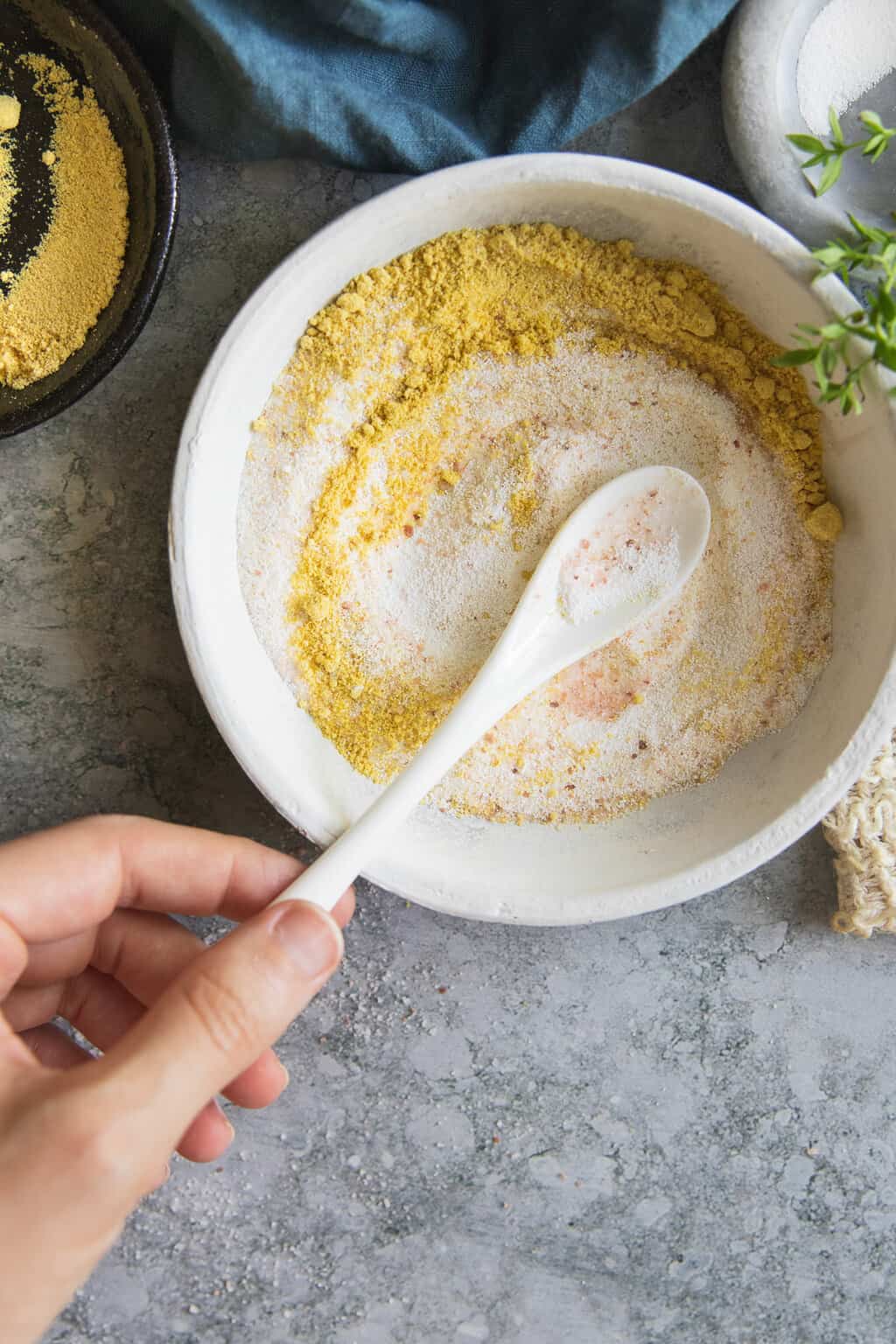
Jump to:
What is a mustard bath?
Made under-the-radar famous, Dr. Singha’s Mustard Bath has been touted by celebrities and splashed all over the pages of fashion magazines—without a lick of advertising or a single social media sponsorship. It’s the ultimate word-of-mouth success story.
Mustard powder has been used medicinally as far back as ancient Greece and India, and it still has a prominent place in modern Ayurveda. When eaten or applied topically, mustard warms the body and is said to help boost circulation, relax tired muscles, and release toxins stored in the body.
As the name suggests, a mustard bath is simply a mixture of mustard powder, sodium carbonate, and other botanicals that are dissolved in bath water. While not as popular today as they were a century ago, mustard baths are often used to alleviate stress, soothe aches and pains, and lower inflammation [source].
And Dr. Singha’s Mustard Bath, in particular, is combined with targeted essential oils, like rosemary, thyme, eucalyptus, and wintergreen, to help stimulate and rejuvenate the body. By combining mustard powder with sodium carbonate and essential oils, you can easily make your own mustard bath soak at home in bulk.
Ingredients

- ½ cup sodium carbonate
- ½ cup pink sea salt, finely ground
- ¼ - ½ cup organic mustard powder (use more for a stronger warming sensation)
- 4 drops peppermint essential oil
- 3 drops rosemary essential oil
- 3 drops thyme essential oil
- 6 drops eucalyptus essential oil
Hint: Sodium carbonate, also known as washing soda, is not the same as sodium bicarbonate, or baking soda. While sodium carbonate is mostly used in the laundry to boost the effectiveness of your detergent, it can be added to hot tubs, pools, and baths to raise the pH. By softening the water, sodium carbonate helps hydrate and soothe the skin.
Instructions

Combine dry ingredients: Start by combining the sodium carbonate, sea salt, and mustard powder in a small bowl. Stir well.
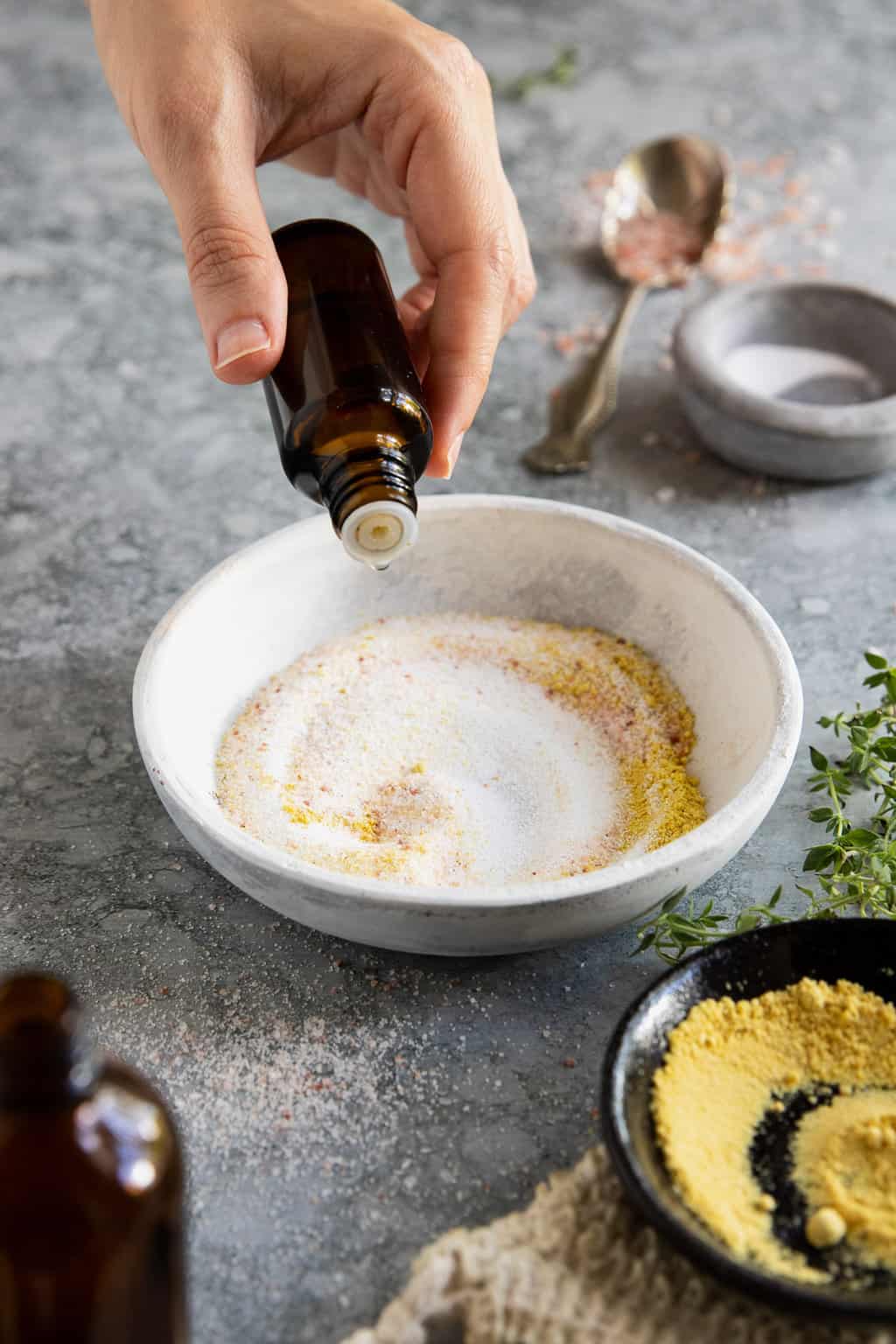
Add the oils: Add the essential oils and stir again, making sure to break up any clumps as best you can.
Transfer to an airtight container and store in a cool, dry place until ready to use.
Substitutions
Sodium carbonate — If you can’t get your hands on sodium carbonate, or you’d just prefer to save money, you can use baking soda instead. While it may not make your skin as soft as Dr. Singha’s, it’ll do the job well enough.
Essential oils — If you’re missing some oils, feel free to toss in a few fresh herb sprigs or a handful of dried herbs (to make cleanup a breeze, wrap them in cheesecloth or a cloth tea bag to keep them from clogging the drain). Or simply swap in the oils you already have.
Pink sea salt — You can also Epsom salt or sea salt.
Variations
Ginger: Adding a small amount of ginger can enhance the anti-inflammatory properties of the bath and provide a warming sensation.
Milk or Powdered Coconut Milk: Adding milk or powdered coconut milk can create a luxurious and nourishing bath experience for your skin.
Clay: Bentonite clay or French green clay can be added to the mixture for additional detoxifying and skin-purifying benefits.
Carrier Oils: Mix a few drops of carrier oils like jojoba, almond, or coconut oil into the mustard bath mixture. Carrier oils can help moisturize your skin during the bath.
How to take a mustard bath
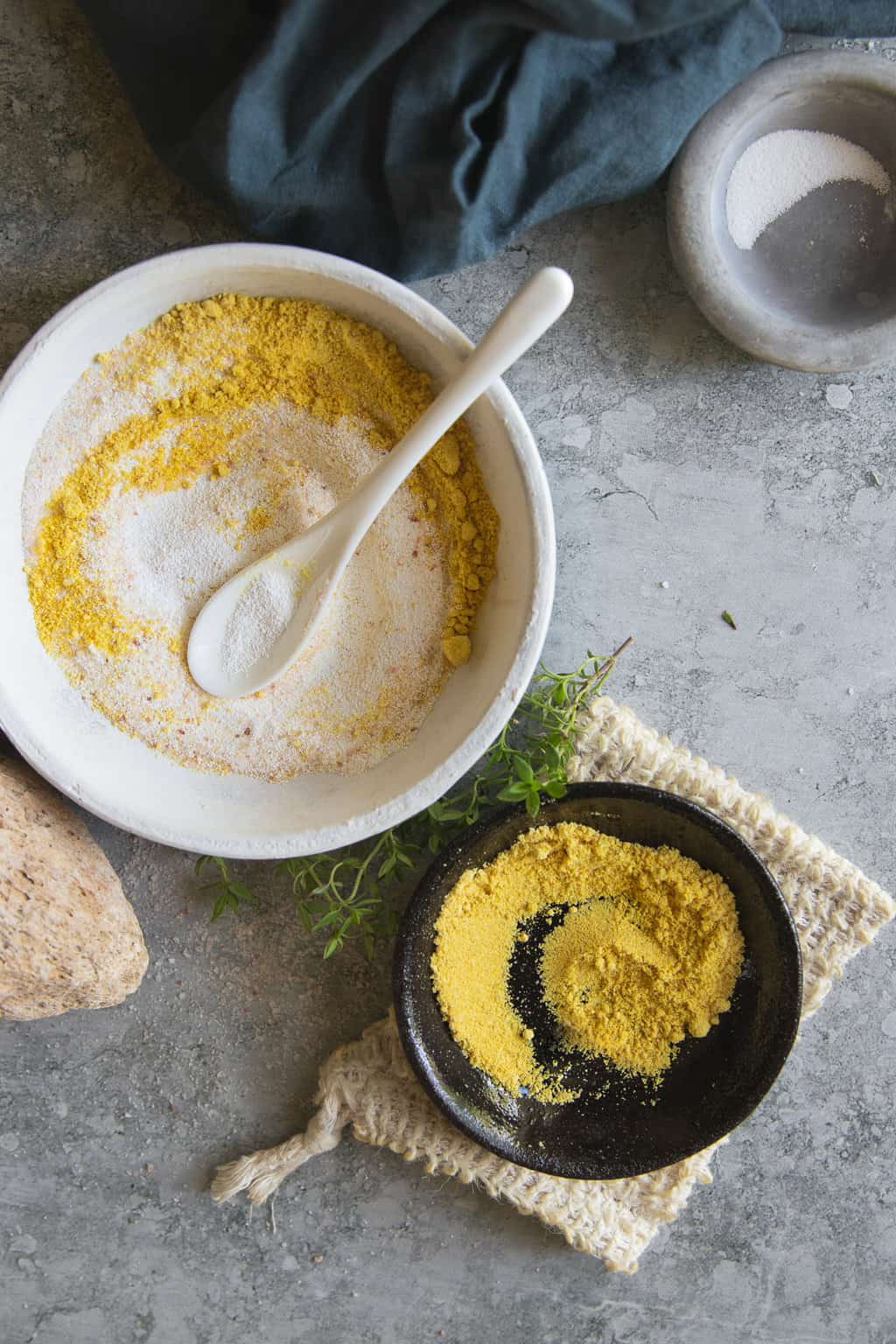
Patch test: Mustard powder has been known to cause allergic reactions [source]. Before climbing in the tub, dissolve some of the mustard bath mixture in water and test it out on a small patch of skin to make sure you don’t have an adverse reaction.
Bath soak: For a full bath, turn the tap on hot, and pour ¼ cup of the mustard soak under running water. Use your hands to swirl the water and dissolve the mustard bath before climbing in.
Soak for 20 minutes, replenishing the water as needed to keep the temperature up and your body sweating (but not so hot you feel as if you might pass out!) Finish with a cool shower. Dry off with a towel and apply a healthy dose of moisturizer.
Foot soak: If you don’t want a full bath, you can reap many of the same benefits with a foot soak. Simply spoon 1 tablespoon of the mustard soak into a large bowl. Fill the bowl ¾ of the way with warm water and stir to dissolve. Soak your feet for 20 minutes. Finish with a short cold soak before patting your feet dry.
FAQ
If left to sit for long periods of time, mustard powder may discolor a white or light-colored tub. Immediately after taking a mustard bath, clean the bottom of the tub and get rid of any lingering mustard powder that may stain the plastic or tile.
While there aren’t any studies on the subject, the warming effects of mustard may help lessen the pain and inflammation associated with arthritis and other inflammatory diseases.
Since mustard causes skin to feel warm or flushed, it may not be suitable for sensitive skin. Like with other bath and body products, it’s best to test it first.
Dissolve a little mustard bath in water, and apply a small amount to an inconspicuous patch of skin. If all goes well and you don’t notice any redness or irritation, it should be safe to use it in the bathtub.


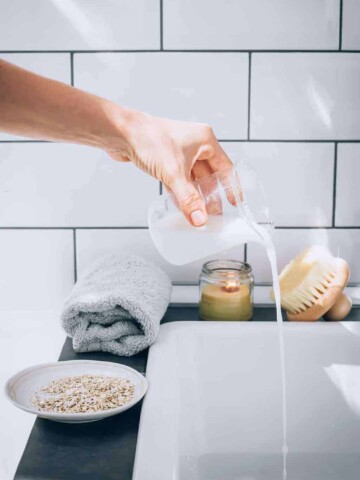
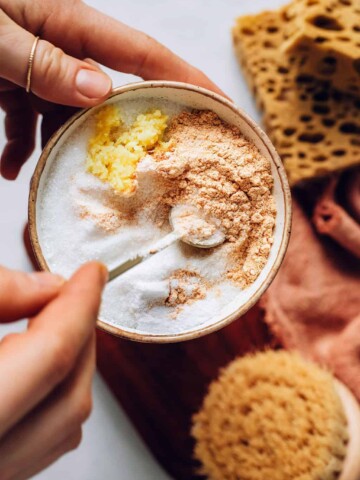

Leave a Comment